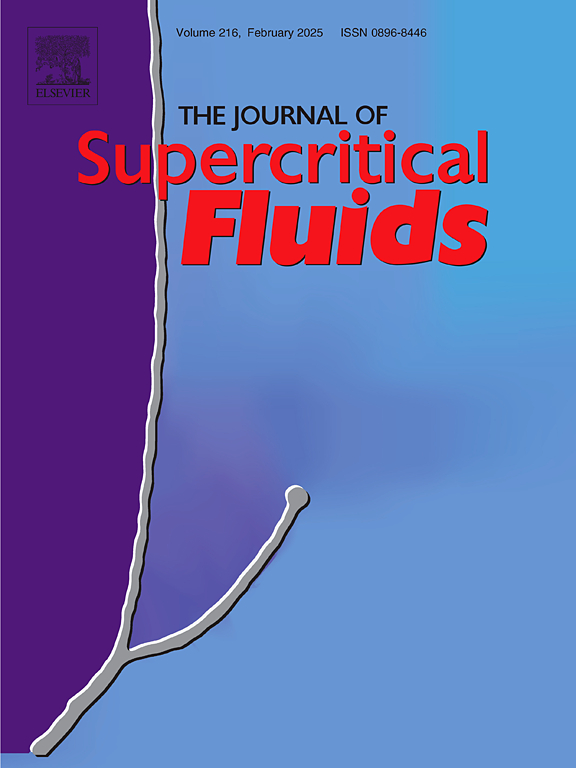Dynamic evolution of corrosion products and their influence on carbon steel corrosion in supercritical CO₂
IF 4.4
3区 工程技术
Q2 CHEMISTRY, PHYSICAL
引用次数: 0
Abstract
The successful implementation of carbon capture and storage depends on mitigating CO2-induced pipeline corrosion. This study simulates supercritical CO2 corrosion of carbon steel under extreme saturated water conditions, comparing corrosion mechanisms in atmospheric, low, and supercritical CO2 environments using weight loss and electrochemical methods. The results show that the corrosion rate in the supercritical environment is 0.396 ± 0.017 mm/y, which is much higher than that in the atmospheric environment (0.226 ± 0.011 mm/y) and slightly higher than that in the low pressure environment (0.317 ± 0.013 mm/y). However, the electrochemical impedance data show that the resistance of the corrosion product layer formed in the supercritical environment in the later stage of corrosion to electric charge is 2439.53 Ω·cm2, which is 5 times that in the low pressure environment and 31 times that in the atmospheric pressure environment. This shows that the supercritical corrosion product layer structure is denser and has a stronger protective effect on the carbon steel in the later stage of corrosion. The corrosion resistance in the supercritical CO2 is controlled by the deposition of corrosion products, forming a double-layer structure. In-situ electrochemical data show that the resistance of the corrosion layer after corrosion for 192 h is 91 times that of corrosion for 6 h (26.66 Ω·cm2). Combined with TEM and other experiments, it is found that this is mainly due to the change of relative supersaturation driving the formation of amorphous and crystalline layers, which affects the overall corrosion protection of the material.
超临界CO 2中腐蚀产物的动态演化及其对碳钢腐蚀的影响
碳捕获和储存的成功实施取决于减少二氧化碳引起的管道腐蚀。本研究模拟了碳钢在极端饱和水条件下的超临界CO2腐蚀,采用失重和电化学方法比较了常压、低压和超临界CO2环境下的腐蚀机制。结果表明,腐蚀速率在超临界环境0.396 ±0.017 mm / y,这远远高于在大气环境(0.226 ±0.011 mm / y),略高于低压环境中(0.317 ±0.013 mm / y)。而电化学阻抗数据表明,腐蚀后期在超临界环境下形成的腐蚀产物层对电荷的阻力为2439.53 Ω·cm2,是低压环境下的5倍,是常压环境下的31倍。这说明超临界腐蚀产物层结构更致密,在腐蚀后期对碳钢具有更强的保护作用。在超临界CO2中的耐蚀性由腐蚀产物的沉积控制,形成双层结构。现场电化学数据表明,192 h腐蚀后的腐蚀层电阻是6 h腐蚀后的91倍(26.66 Ω·cm2)。结合TEM等实验发现,这主要是由于相对过饱和度的变化驱动了非晶层和结晶层的形成,从而影响了材料的整体防腐性能。
本文章由计算机程序翻译,如有差异,请以英文原文为准。
求助全文
约1分钟内获得全文
求助全文
来源期刊

Journal of Supercritical Fluids
工程技术-工程:化工
CiteScore
7.60
自引率
10.30%
发文量
236
审稿时长
56 days
期刊介绍:
The Journal of Supercritical Fluids is an international journal devoted to the fundamental and applied aspects of supercritical fluids and processes. Its aim is to provide a focused platform for academic and industrial researchers to report their findings and to have ready access to the advances in this rapidly growing field. Its coverage is multidisciplinary and includes both basic and applied topics.
Thermodynamics and phase equilibria, reaction kinetics and rate processes, thermal and transport properties, and all topics related to processing such as separations (extraction, fractionation, purification, chromatography) nucleation and impregnation are within the scope. Accounts of specific engineering applications such as those encountered in food, fuel, natural products, minerals, pharmaceuticals and polymer industries are included. Topics related to high pressure equipment design, analytical techniques, sensors, and process control methodologies are also within the scope of the journal.
 求助内容:
求助内容: 应助结果提醒方式:
应助结果提醒方式:


